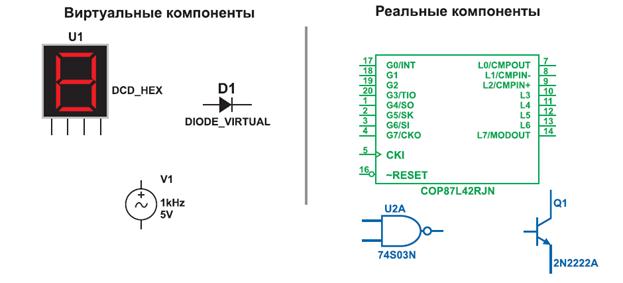Writing. 18. Write an essay (not more than 250 words): ‘Will the future generations be healthier?’
18. Write an essay (not more than 250 words): ‘Will the future generations be healthier?’ Suggested procedure: 1. Revise the articles of the Unit and see what ideas and concrete examples you can use in the essay. 2. Arrange the ideas in a logical order and make up a plan of the essay giving an introduction that will state the subject of your essay and a conclusion which will summarize the ideas and give your answer to the question in the title. 3. See the world list of the Unit and decide what vocabulary would be appropriate in your essay. 4. Write the essay using as many passive forms as possible. Introduce each idea or paragraph with linking words and discourse markers like ‘ first of all, on the one hand … on the other hand, although, moreover, however, above all, as a result, to make a long story short, quite honestly, ideally, basically, naturally, personally, apparently, presumably, admittedly, predictably, obviously, generally speaking, strictly speaking’.
Study the following information. Making a speech Oral speech is basically different from writing. If a reader can stop and read some parts of the text over again, a listener cannot. That’s why the way a speech is built and the way it is presented are very important. To be successful, you can follow some rules. 1. Study the subject you are going to speak about and collect the information that might interest your listeners. “Speak not because you have to say something but because you have something to say.” 2. Determine your aim: - Are you going just to inform your listeners? - Would you like to make them doubtful about the existing opinions? - Do you want to convince them of something? 3. Select the facts and arguments (from the information you have collected) according to your aim. Think which of them would suit your purpose best and what you’d better not mention if you don’t want a conflict. Remember: you must be brief and to the point. 4. Think in what order you are going to present your ideas. Remember that you won’t have the attention of your listeners all the time. Generally, people listen to the beginning of a speech, then their attention wanders off and after a certain time you can get it back (if your speech is interesting enough). Remember M. V. Lomonosov, who said: “Из доводов сильные и важные должно положить напереди, те, которые других слабее, в середине, а самые сильные – на конец утверждения, ибо слушатели и читатели больше началу и концу внимают и оных больше помнят.”[2] 5. Think what introductory words and phrases you are going to use before each argument. It would be nice if you could introduce them with a question. It would make your speech more conversational and lively. 6. See how you could emphasize the most important ideas. 7. Think about actual presentation. Will you have just a plan of your speech or will you write it in full? Remember that in writing we use more complicated sentences than in oral speech. Will you be able to read your speech properly?
Prepare a short speech on one of the following subjects. 1. A doctor will easily treat you to death. 2. The pros and cons of alternative medicine. 3. Medical quacks.
Grammar Revision Grammar Training Supply the correct form of the verbs given in brackets. A. £20 ‘Profit’ for Muggers Who Killed Woman The woman who (1) _______________ (to run over and kill) by muggers outside Euston station in London (2) _______________ (to have) just £20 cash in her handbag which she (3) _______________ (to try) to retrieve, it emerged yesterday. Police named the dead woman as Mrs Liz Sherlock, 42, a costume designer from Cheswick in West London. Mrs Sherlock (4) _______________ (to work) for 15 years as a freelance designer for television. She just (5) _______________ (to finish) work on her first feature film, her husband, Peter, said yesterday. Mrs Sherlock (6) _______________ (to kill) on Monday outside the station. She (7) _______________ (to chase) a man who (8) _______________ (to snatch) her bag, but (9) _______________ (to sweep) onto the bonnet of the car to which she (10) _______________ (to cling) and (11) _______________ (to run over). She (12) _______________ (to die) at the Royal London hospital of multiple injuries. Mr Sherlock, 48, a computer programmer, (13) _______________ (to comfort) by relatives at the couple’s home yesterday. He (14) _______________ (to issue) a statement paying tribute to his wife describing her as a “5ft 2in bundle of energy.” “What Liz did yesterday (15) _______________ (to surprise) none of her friends and family,” he said. “Naturally I (16) _______________ (to shock) deeply by the events of yesterday. Words cannot express how I (17) _______________ (to feel) at the moment.” Detective Inspector Martin Lee, from the Metropolitan police serious crime group, said the woman’s handbag (18) ______________ (to contain) around £20 cash, credit cards and “minor personal effects.” The bag (19) _______________ (not to recover). He said details of the incident (20) _______________ (to remain) “sketchy”, and (21) _______________ (to appeal) for witnesses. In particular, it was still unclear whether the woman (22) _______________ (to leap) on to the bonnet of the car to try to stop it, or whether the thieves deliberately (23) _______________ (to drive) into her. DI Lee said officers (24) _______________ (to examine) closed-circuit video evidence from the station, which he expected “to assist greatly” in identifying the muggers. A postmortem examination (25) _______________ (to carry out) yesterday at St. Pancras mortuary. (From ‘The Guardian’, abridged) B.
|




